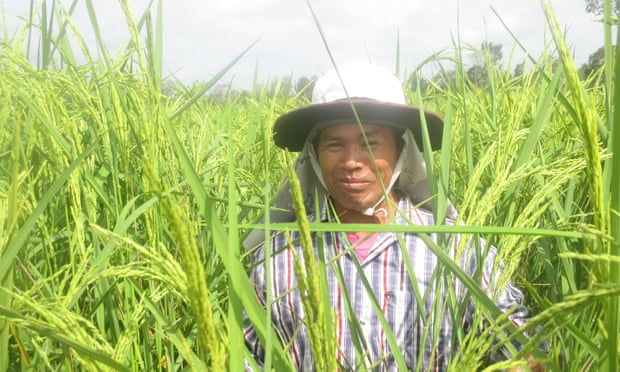The miracle method for sustainable rice – and bigger harvests

The fragrant jasmine rice growing on the left side of Kreaougkra Junpeng’s five-acre field stands nearly five feet tall. Each plant has 15 or more tillers, or stalks, and the grains hang heavy from them. The Thai farmer says this will be his best-ever harvest in 30 years and he will reap it four weeks earlier than usual.
It is very different on the other side of the field. Here, Junpeng planted his rice in closely spaced clumps of 20 or more seedlings in shallow water just as he, his father and millions of other small farmers across south-east Asia have always done. He used the same seeds but the conventionally grown plants are wind-battered and thin, and clearly have fewer, smaller grains.
Junpeng is part of a pilot project to see if it’s possible to grow more rice with less water and fewer greenhouse gases. The dramatic difference between his two crops points a way to help the world’s 145 million small rice farmers, and could also greatly reduce global warming emissions from agriculture.
The project, backed by the German and Thai governments and by some of the world’s largest rice traders and food companies, has seen 3,000 other farmers in this corner of Thailand’s “rice basket” near the Cambodian border trained to grow sustainable rice according to the principles of a revolutionary agronomical system discovered by accident in Madagascar in the 1980s.
For More:

